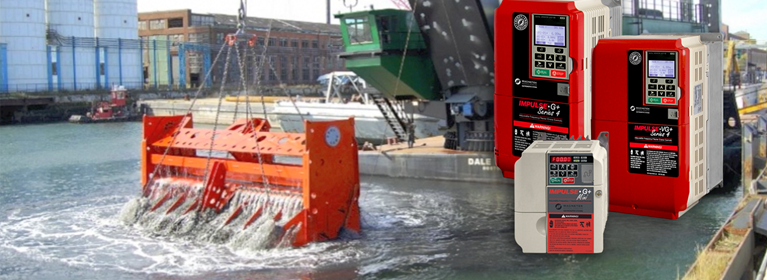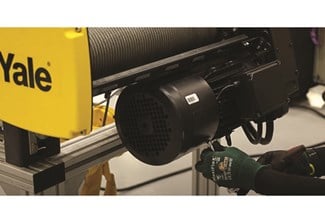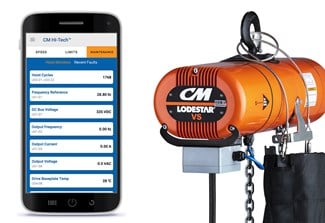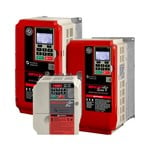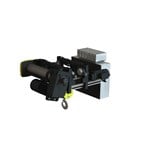When it comes to controlling cranes and hoists, there are different options available, including standard VFD control and advanced VFD control that utilize variable frequency drives (VFDs) and 2-speed control. In this blog post, we will explore the benefits of VFD crane control over 2-speed control, focusing on factors such as load control, speed adjustment, efficiency, hoist life, and more.
Standard VFD Control is a control technique used with VFDs that allows precise control over the speed and torque of the motor. It provides advanced motor control by accurately regulating the voltage and frequency supplied to the motor, resulting in enhanced performance and efficiency while reducing wear and tear on the hoist due to smooth accelerations and decelerations. The wear on the brake is greatly minimized because the motor halts the hoist before setting the brake, making the brake function solely as a "parking brake."
Advanced VFD Control, also known as flux vector control, is a control method that combines the advantages of standard VFD control with feedback from a precision encoder and a motor with improved cooling, allowing it to operate for extended periods at very low RPm’s. It provides a wider range of control over motor speed, torque, and position, making it suitable for applications that require maximal precision or extremely slow motion.
2-Speed Control: In 2-speed control, the motor is designed to operate at two pre-set speeds. The operator can switch between these two speeds depending on the requirements of the task. However, the speed adjustment is set based on the motor windings and therefore is limited compared to VFD control, reducing flexibility and customization.
GREATER SPEED ADJUSTMENT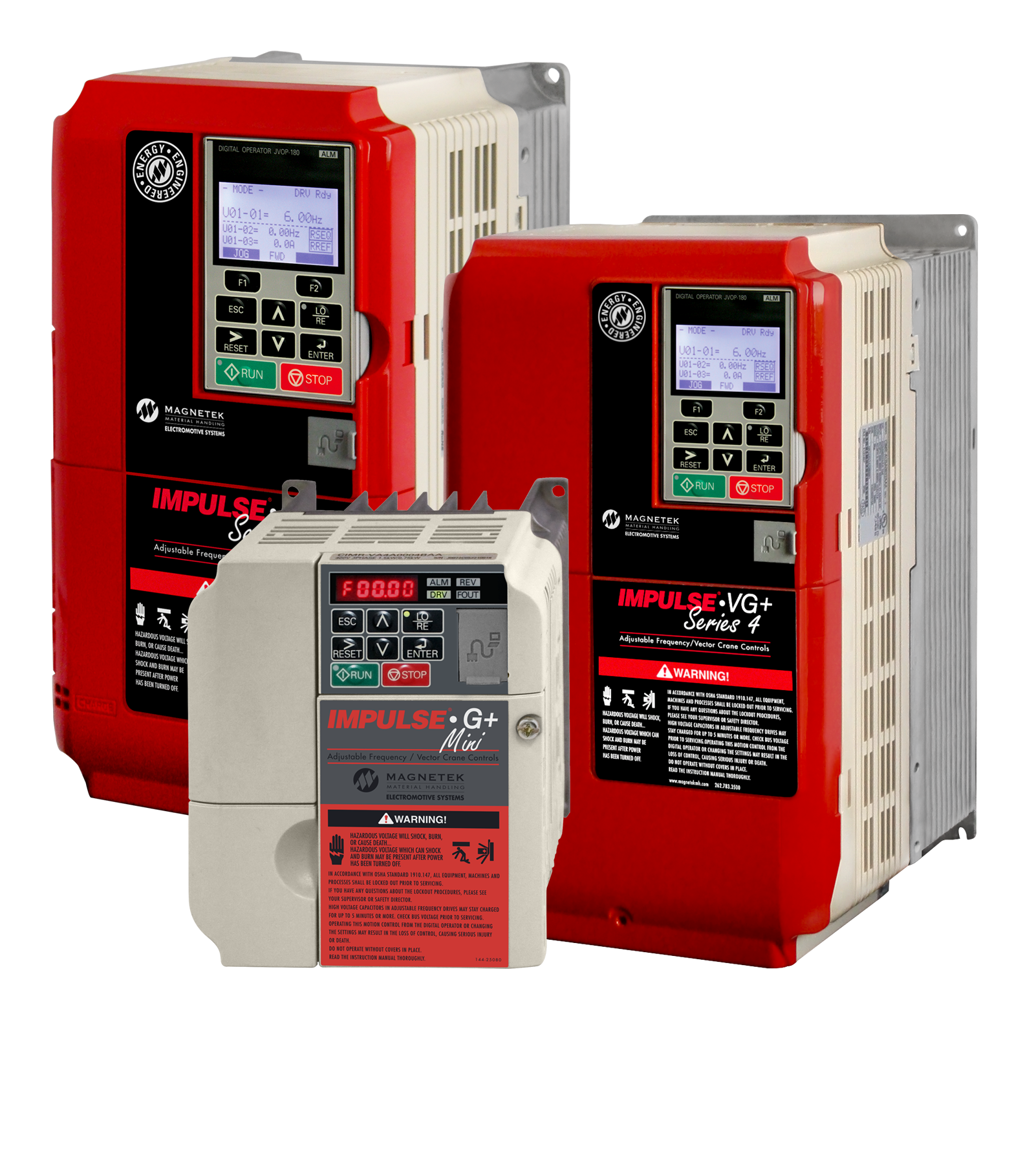
- VFD: With VFD control, you have the flexibility to set the speed and ramp rate, allowing for customized control based on your specific application requirements. This versatility enables precise speed adjustments.
- 2-Speed: In contrast, 2-speed control is limited to two pre-set speeds determined by the motor manufacturer. These speeds cannot be adjusted, restricting your control options.
IMPROVED LOAD CONTROL
- VFD: Ensures smooth operation by gradually slowing down a load. VFD crane control also allows for smooth acceleration to minimize load swings in the traverse motions.
- 2-Speed: When the operator is locked into two speeds, it can be difficult to precisely position a load. Speed control is very limited, which can result in shock loading and load swing. Jogging the hoist to position the load causes a high inrush to the motor that can lead to increased heating and a lower lifespan for the hoist.
BRAKES
- VFD: VFD control offers electronic dynamic braking, allowing the crane to be slowed down smoothly. The braking energy is regenerated back to the controls, where it can be dissipated as heat through resistors or recycled back to the power source. The brake is primarily used for parking or emergency stops, significantly extending its lifespan.
- 2-Speed: Brakes are used to slow down the hoist. This causes continuous wear and tear, increased maintenance, and more frequent brake replacement. Sudden and uncontrolled braking can cause excessive load sway.
EFFICIENCY
- VFD: VFD control consumes only the power required by the motor load, resulting in energy savings compared to contactors and soft starters. This energy-efficient operation contributes to cost savings and reduced environmental impact.
- 2-Speed: In 2-speed control, energy consumption is dictated by the motor windings or speed resistors, which continuously waste energy. The harsh starts associated with 2-speed control often pull five to eight times the normal full load current rating of the motor, resulting in inefficient energy usage.
INCREASED HOIST LIFE
- VFD: Some VFDs provide thermal overload and overcurrent protection for the hoist motor, prolonging its life. The motor is soft started by the VFD, which extends the life of the insulation and windings. VFDs also utilize a ramp-to-stop method of braking rather than using brake shoes to slow down. This minimizes the forces seen by the crane structure. The brake is only used for parking and emergency situations, which extends brake life.
- 2-Speed: Increased maintenance on the brakes and cleaning of speed resistors, if equipped. The motor will have a shorter life due to high inrush currents.
DIGITAL DIAGNOSTICS
- VFD: VFD control systems feature digital diagnostics, providing valuable information for maintenance and troubleshooting purposes. These diagnostics can be accessed on the machine itself or remotely, allowing for efficient monitoring and quick identification of potential issues.
- 2-Speed: On the other hand, 2-speed control lacks the ability to monitor or record diagnostic information, making troubleshooting and maintenance more challenging.
When comparing VFD control, specifically standard VFD control, to 2-speed control for hoist applications, several notable benefits arise:
Precise Load Control
A significant advantage of using standard VFD control in hoist applications is the ability to achieve precise load control. Columbus McKinnon’s standard VFD hoists utilize Magnetek-brand IMPULSE·G+ Mini variable frequency drives, which offer a 6:1 speed ratio, allowing for a wide range of hoist lifting speeds. This customization ensures precise positioning of the load and minimizes load bounce, resulting in smoother and more accurate operations. In contrast, 2-speed control is limited to two pre-set speeds, restricting the operator's control options.
Increased Duty Cycles
Standard VFD control offers increased duty cycle capabilities, making it ideal for high-duty-cycle applications. By incorporating VFD control, the load brake on the motor acts as a holding brake rather than a stopping device. This eliminates the need for internal mechanical load brakes sometimes found in hoists with 2-speed control, reducing heat generation. Additionally, the external brake resistor allows for maximum heat dissipation and uninterrupted drive service at high-duty cycles.
Easy Troubleshooting
VFDs feature user-friendly keypads and easy-to-read screens, facilitating on-the-spot safety readouts. Recorded faults simplify and expedite the troubleshooting process, minimizing downtime. Furthermore, advanced features such as Intelli-Connect Mobile: Wireless Drive Monitoring, Analytics, and Configuration provide detailed operation information, enabling quick and easy programming, maintenance, monitoring, and troubleshooting from a tablet or smartphone.
Extended Component Service Life
By utilizing standard or advanced VFD control, hoist operators benefit from extended component service life. VFDs offer built-in thermal overload and overcurrent protection for the hoist motor, prolonging its lifespan. The ramp-down-to-stop feature decreases load bounce, reducing wear and tear on components such as brakes. This leads to increased safety, minimized maintenance requirements, and longer-lasting components.
Embrace the future of crane and hoist control with standard VFD control, enjoying numerous benefits over 2-speed control at a better price point than advanced VFD control. Experience the precision of load control, the versatility in speed adjustment, improved efficiency, extended hoist life, enhanced equipment performance, and ease of troubleshooting - all contributing to a lower total cost of ownership. Upgrade to VFD control today, and redefine your operations with precision, efficiency, and longevity.
Explore YK STANDARD VFD Hoists Explore SK ADVANCED VFD Hoists
Ready to make the switch to VFD control for your cranes and hoists? To help you further understand the differences between VFD control and 2-speed control, we have created a free comparison chart. This chart provides an in-depth analysis of the features of each control method, allowing you to make an informed decision for your specific needs.
Don't miss out on this valuable resource! Click the link below to download your free control comparison chart:
Download Free Control Comparison Chart
North America - EN




